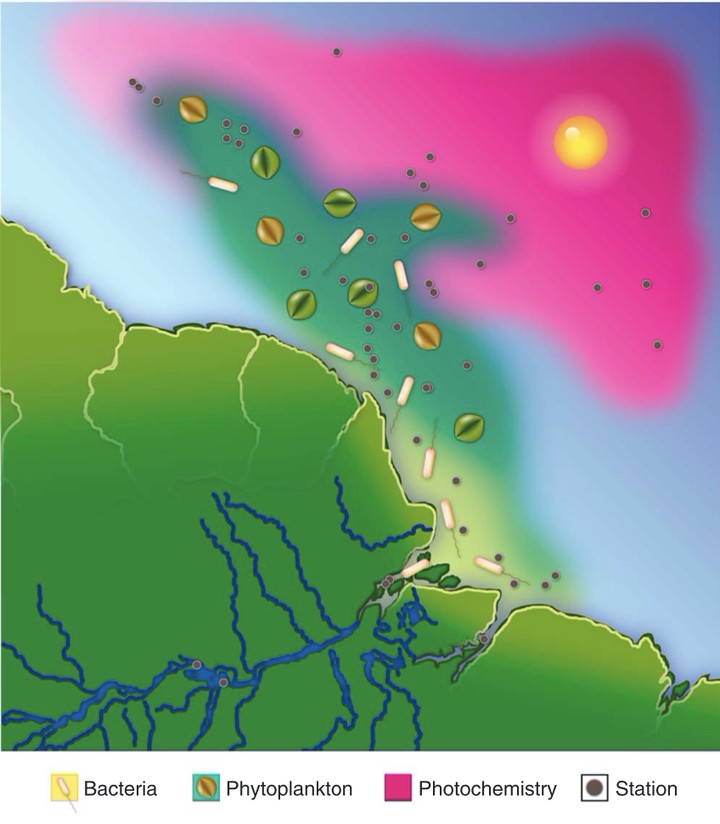Fate of Amazon River dissolved organic matter in the Tropical Atlantic Ocean

Abstract
Constraining the fate of dissolved organic matter (DOM) delivered by rivers is a key to understand the global carbon cycle, since DOM mineralization directly influences air-sea CO2 exchange and multiple biogeochemical processes. The Amazon River exports large amounts of DOM, and yet the fate of this material in the ocean remains unclear. Here we investigate the molecular composition and transformations of DOM in the Amazon River-ocean continuum using ultrahigh resolution mass spectrometry and geochemical and biological tracers. We show that there is a strong gradient in source and composition of DOM along the continuum, and that dilution of riverine DOM in the ocean is the dominant pattern of variability in the system. Alterations in DOM composition are observed in the plume associated with the addition of new organic compounds by phytoplankton and with bacterial and photochemical transformations. The relative importance of each of these drivers varies spatially and is modulated by seasonal variations in river discharge and ocean circulation. We further show that a large fraction (50–76%) of the Amazon River DOM is surprisingly stable in the coastal ocean. This results in a globally significant river plume with a strong terrigenous signature and in substantial export of terrestrially derived organic carbon from the continental margin, where it can be entrained in the large-scale circulation and potentially contribute to the long-term storage of terrigenous production and to the recalcitrant carbon pool found in the deep ocean.